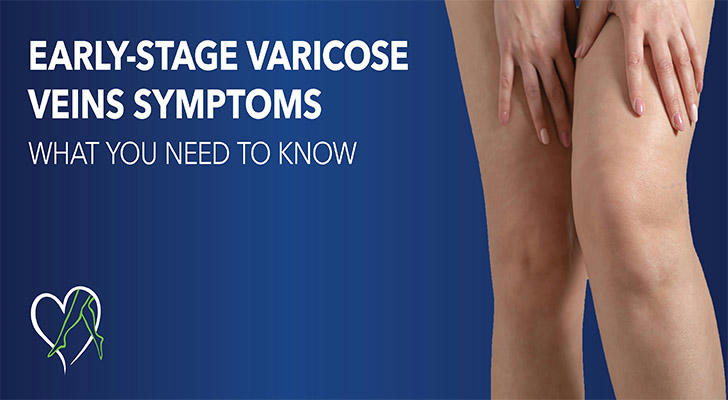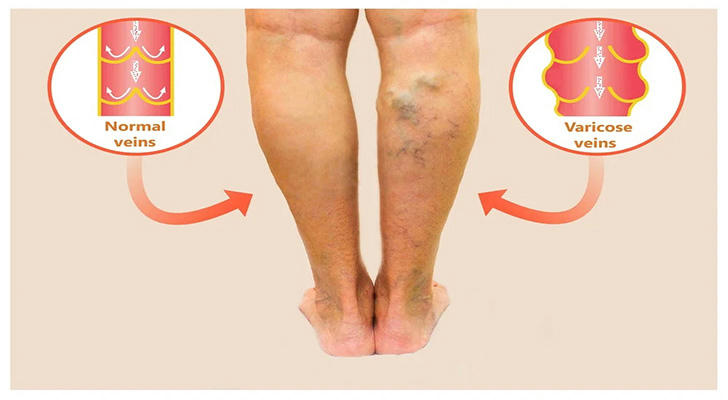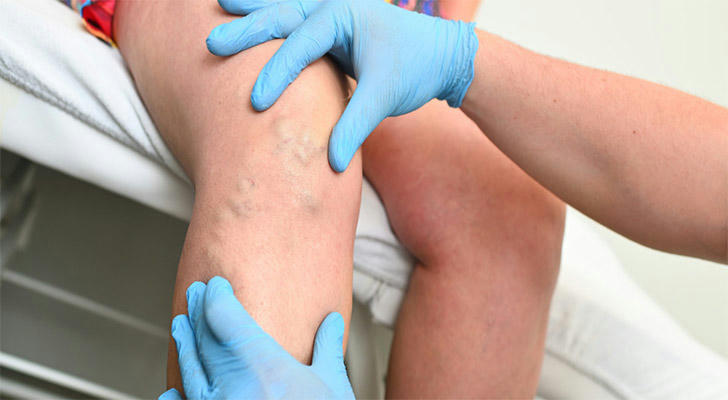Attention! Leg Discomfort May Be an Early Sign of Varicose Veins

Varicose veins are often dismissed as a mere cosmetic concern, but they can actually indicate a deeper vascular issue. If left untreated, varicose veins may lead to more serious health problems. The good news is that identifying the early signs of varicose veins and taking preventive measures can make a significant difference in managing the condition. In this article, we’ll explore the early symptoms of varicose veins, how to recognize them, and the steps you can take to prevent them from worsening.
What Are Varicose Veins?
Varicose veins occur when the veins in your legs become enlarged, swollen, and twisted due to poor blood circulation. Normally, veins have one-way valves that prevent blood from flowing backward. When these valves weaken or fail, blood starts to pool in the veins, causing them to stretch and bulge. Over time, this can lead to discomfort, pain, and in severe cases, complications like blood clots or ulcers.
Early Symptoms of Varicose Veins

The earlier you recognize the symptoms, the sooner you can take action to prevent the condition from worsening. Here are the most common early signs of varicose veins:
1. Heaviness or Fatigue in the Legs
A feeling of heaviness or tiredness in your legs, particularly after standing or sitting for long periods, is one of the first symptoms. This sensation occurs because blood is pooling in the veins, which increases pressure on the legs and makes them feel fatigued.
2. Visible Blood Vessels
Small, spider-like veins or slightly enlarged blood vessels may appear on the surface of the skin, particularly around the knees, ankles, and calves. These are often the first visible signs of varicose veins and should not be ignored.
3. Swelling
Swelling in the lower legs, ankles, or feet is common, especially after a long day of standing or sitting. This swelling is due to fluid buildup as a result of poor blood circulation. If it occurs regularly or lasts for extended periods, it could be an indication of developing varicose veins.
4. Pain or Burning Sensation
Some people experience aching, throbbing, or a burning sensation in the legs, particularly after standing for a long time. This discomfort occurs because the blood flow is restricted, causing pressure to build up in the veins.
5. Itching or Skin Changes
The skin over varicose veins may become dry, itchy, or discolored. In more advanced stages, the skin can become thinner or develop open sores. These changes are a sign that the veins are not functioning properly and need attention.
6. Nighttime Leg Cramps
Leg cramps, especially at night, are common for people with varicose veins. These cramps occur because the veins are struggling to pump blood back to the heart, causing discomfort in the calf muscles.
How to Recognize the Early Signs
Recognizing the early signs of varicose veins can be tricky, as they often appear gradually. Here’s how you can keep an eye on potential symptoms:
• Self-Examination: Regularly check your legs for changes in skin appearance, visible veins, or swelling, especially after prolonged periods of standing or sitting. This can help you catch symptoms early.
• Track Symptoms: Keep a log of any discomfort, pain, or swelling in your legs, noting the time of day, duration, and severity. This will give you a clearer picture of your condition and help a healthcare provider diagnose the issue.
• Know Your Risk Factors: Family history, obesity, pregnancy, and standing or sitting for long periods all increase your risk for varicose veins. Being aware of these factors allows you to take proactive steps to reduce your risk.
When to Seek Medical Help
If you experience any of the following, it’s essential to consult a healthcare professional as soon as possible:
• Increasing Pain or Swelling: If your pain, swelling, or discomfort becomes unbearable or persistent, you may have a more severe form of varicose veins that requires treatment.
• Signs of Blood Clots: If you notice redness, swelling, warmth, or tenderness in a particular area of your leg, you may have developed a blood clot, a serious complication of varicose veins. Seek immediate medical attention.
• Skin Ulcers or Changes: If the skin around your veins becomes ulcerated or starts to break down, it’s important to see a doctor to prevent further complications.
How to Prevent and Manage Early Varicose Veins

The good news is that by recognizing the early signs and taking action, you can prevent varicose veins from getting worse. Here’s what you can do:
1. Exercise Regularly
Regular physical activity, such as walking, swimming, or cycling, helps improve circulation and reduces the risk of varicose veins. Exercise strengthens the muscles in your legs, which helps propel blood back toward your heart.
2. Elevate Your Legs
Elevating your legs above the level of your heart for 15-30 minutes each day encourages blood flow and helps reduce swelling. This simple step can make a big difference in managing early symptoms.
3. Wear Compression Stockings
Compression stockings apply gentle pressure to the legs, improving circulation and reducing swelling. They are particularly useful for those who spend long periods standing or sitting.
4. Avoid Prolonged Sitting or Standing
If your lifestyle or job requires you to sit or stand for long periods, make an effort to move around every 30 minutes. Simple leg stretches or a short walk can help reduce pressure in the veins and promote better circulation.
5. Maintain a Healthy Weight
Carrying excess weight puts additional pressure on your veins. Maintaining a healthy weight can help reduce the strain on your legs and prevent varicose veins from developing or worsening.
6. Eat a Healthy Diet
A balanced diet high in fiber and low in salt can help prevent constipation and swelling. Eating foods rich in antioxidants, such as vitamins C and E, can strengthen the walls of your veins and promote better circulation.
Conclusion: Early Action is Key
Varicose veins don’t develop overnight, but their early symptoms can often be overlooked. By recognizing the signs—such as leg fatigue, visible veins, swelling, and discomfort—you can take proactive steps to manage the condition before it worsens. Early intervention can make a significant difference in your leg health and prevent complications in the future. If you notice any symptoms, don’t hesitate to consult a healthcare provider for personalized advice. The sooner you act, the better your chances of preventing severe varicose veins and maintaining healthy, pain-free legs.
